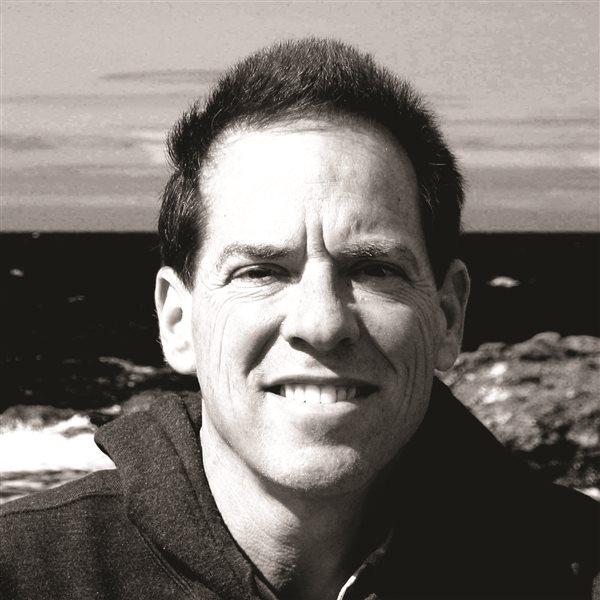The route was a 200-mile triangle over mountainous terrain; northeast from Scottsdale to collect the boys at Payson, then northwest to drop them at Flagstaff, and finally due south for the return home. Although the distances weren't great, planning was required to fly a planeload of kids and baggage out of high-elevation airports in Arizona's summer heat. There was camping gear to carry, plus fresh clothing and musical instruments. Accordingly I arranged an early-morning departure, carrying just enough fuel to complete the trip with a safe reserve.
"Beautiful day for flying," said the briefer. "Just the usual scattered flight restrictions due to summer firefighting." Dutifully I noted their locations and launched in clear skies from Scottsdale, climbing on course to cross the McDowell Mountains a few miles away. Reaching the ridge, I was surprised to discover a sea of gray smoke dammed on the other side. Eyes and nostrils burning, I turned away and radioed Phoenix Approach for guidance.
"We're too busy to provide vectors," came the reply, "but the valley northeast of the McDowells is busy with firefighting aircraft. Proceed 20 miles north before turning east." I skirted the smoky haze, then rendezvoused with the boys and their scoutmaster at Payson.
Quickly we dined on omelets before temperatures became too hot for takeoff from the 5,000-foot elevation airport. Then I loaded kids, backpacks, keyboard, and guitar into the airplane, along with clothes and goodies sent by Mom from home. Maneuvering after takeoff to avoid rising terrain, we staggered aloft toward Flagstaff.
Now came my favorite leg of the trip, tracing softly forested edges of the Mogollon Plateau. Morning sun silvered mountain lakes off our wing, and before long Flagstaff materialized ahead. There we dined vegetarian-style at Macy's and wandered pine-shaded streets before delivering the boys to music camp. Takeoff from Flagstaff came at dusk, with darkness falling on the way home.
Finding no haze reflected in the landing light and little scent of smoke, I assumed with relief that any remaining fires must be under control. Scottsdale Airport soon appeared at 12 o'clock, cloaked by its mantle of city lights. But something was wrong as I entered the traffic pattern. Glimmering weirdly to my left were lights that shouldn't have been there. Increasingly confused during the descent, I watched as those strange lights hovered supernaturally over my wing.
"What's going on?" I radioed the tower, disoriented.
"Fire on the McDowells," came the reply. Now I understood. Normally black and invisible at night, mountain peaks 2,000 feet above me were flickering with jewels of flame. Fires had jumped from beyond and ignited the ridge.
The McDowell range runs 10 miles northwest to southeast, with Scottsdale Airport nestled below the northwest end. Driving to our town southeast of the mountains, I was relieved to see the ridgetop flames receding behind me.
Not until turning north toward home on the other side did I grasp the magnitude of the fire. My heart jumped into my throat - the sky glowed with firelight a thousand feet high, flames concave like the inside of a red balloon squeezed by blackness from above. Those ridgetop glimmers near the airport had granted no hint of the inferno on the other side.
Choking on smoke, I frantically negotiated ash-covered streets clogged with gawkers and emergency vehicles. Hundred-foot flames consumed over half the horizon, tinting our neighborhood orange like fires from hell. The boys were safe at camp. But what of my wife, Jean, and our home?
The house still stood. Rushing panicked through empty rooms, I almost missed a ghostly shadow on the patio. It was Jean, resisting fate with a garden hose. We embraced, soaked in sweat.
"I couldn't imagine you flying in this," she said, crying.
"And I thought the house was gone with you in it," I said through tears of my own.
We sweltered on that patio in the red-hot glow of flames, wishfully watering the roof and wondering what would happen next. Preparing for evacuation, we loaded the car's trunk and contacted friends for a place to stay.
That's when the phone rang. It was our boys, worrying about our safety. The tide seemed to turn when we heard those young voices, reminding us that material possessions don't matter. Near midnight the air cleared somewhat, heralding a change in the wind, blowing the fire away from town. We fell into fitful sleep as the fires receded. The fire lasted several more days and threatened other communities, but for us the danger was over.
I still relive those nightmarish scenes - landing disoriented amid an unnaturally lit night; the blood-red cavern of sky as I turned my car homeward; and especially, holding Jean, drenched and choking amid hellish flames on our normally tranquil patio. And then there's a loving phone call from two little boys to remember.



